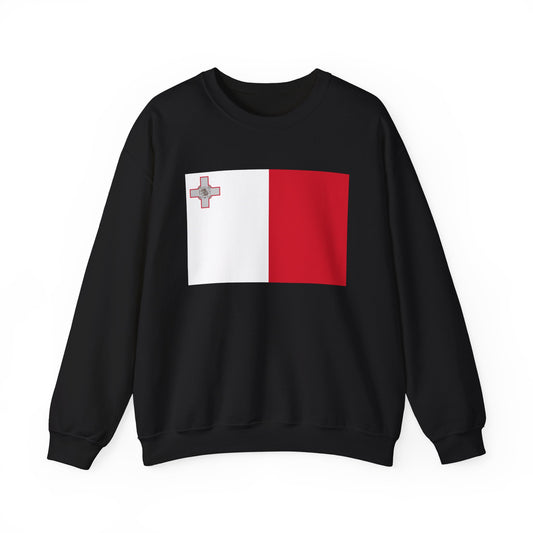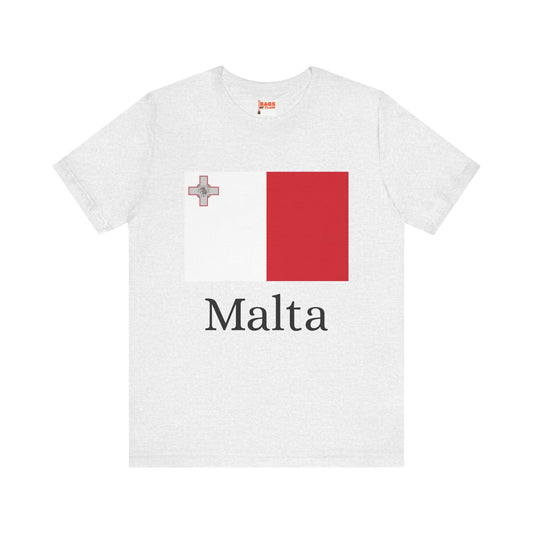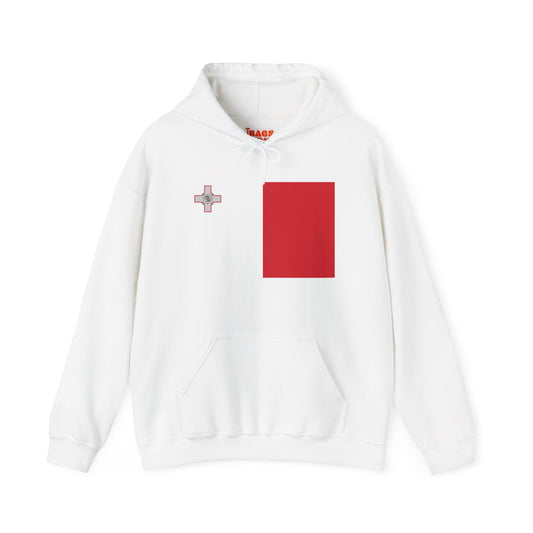-
Malta Flag Sweatshirt
Regular price $34.15 USDRegular priceUnit price / per -
Malta Inspired Sweatshirt
Regular price $34.15 USDRegular priceUnit price / per -
Malta Sweatshirt
Regular price $34.15 USDRegular priceUnit price / per -
Malta Leather Patch Hat
Regular price $18.85 USDRegular priceUnit price / per -
Malta Trucker Cap
Regular price $14.90 USDRegular priceUnit price / per -
Malta Hoodies
Regular price $34.40 USDRegular priceUnit price / per -
Malta Inspired Hoodies
Regular price $34.40 USDRegular priceUnit price / per -
Malta T-shirts
Regular price $22.79 USDRegular priceUnit price / per -
Malta Flag Hoodies
Regular price $34.40 USDRegular priceUnit price / per -
Malta Inspired T-shirt
Regular price $22.79 USDRegular priceUnit price / per -
Malta Flag on T-shirt
Regular price $22.79 USDRegular priceUnit price / per
Collection: Malta
The Malta flag is a colorful emblem representing the Mediterranean island nation's rich history and culture. Adopted in 1964, the flag of Malta has undergone several changes over time, reflecting the country's evolving identity and political landscape. We will explore the design, historical context, symbolism, current relevance, and additional facts surrounding Malta's flag.
Overview of the Malta Flag

The flag of Malta features a simple yet profound design, comprising two vertical bands in red and white, with the George Cross, outlined in red, sitting in the canton. This symbolic cross is a nod to the country's bravery during a tumultuous period in World War II, awarded explicitly by King George VI. The choice of red and white harkens back to the traditional colors associated with Malta, echoing the nation's long-standing identity and values. These hues are deeply entrenched in Maltese culture, symbolizing the dual qualities of bravery (red) and peace and unity (white) that the Maltese people hold dear. This straightforward design belies a complex narrative of resilience, history, and national pride, encapsulating the spirit of Malta and its inhabitants.
Historical Context of the Malta Flag
The journey of the Malta flag towards its current form is deeply intertwined with the island's rich and varied history. Officially hoisted in 1964 to mark Malta's independence from British rule, the flag symbolizes a new era while paying homage to the island's past courage and resilience. The addition of the George Cross to the flag's design in 1943, amid the throes of World War II, was a distinct acknowledgment of King George VI of Malta's extraordinary bravery during the Siege of Malta. This period was marked by intense bombardments and a crippling blockade by Axis forces, highlighting the strategic importance of Malta in the Mediterranean theater.
Before adopting its current flag, Malta was represented under many banners reflecting its changing governance through the centuries. From the rule of the Phoenicians to the Knights of St. John, each era left its mark on the island's cultural and historical fabric. The inclusion of the George Cross on the national flag in 1943, before independence, was a precursor to Malta's journey toward self-determination, linking the island's heroic wartime efforts to its national identity. This evolution of the flag underscores the resilience of the Maltese people and their ability to adapt and thrive through various epochs, from ancient times to their status as a sovereign nation in the modern world.
Symbolism Behind the Malta Flag

The Malta flag carries deep symbolic meanings that resonate with the Maltese people and their heritage. The George Cross prominently featured at the canton symbolizes Malta's extraordinary courage and endurance during the Siege of Malta in World War II. Awarded by King George VI, this honor reflects the island's significant contribution and sacrifice during a critical period in history. The red and white colors of the flag are steeped in Maltese tradition, representing bravery, peace, and unity among its people.
These colors can be traced back to the Norman period, showcasing a connection to when Malta was under the influence of Norman rulers. The flag's layout, with its vertical bands, is a reminder of the historical and cultural pillars that have shaped the nation's identity. Together, these elements weave a narrative of resilience, unity, and pride, encapsulating the essence of the Maltese spirit and their enduring legacy in the Mediterranean region.
Current Relevance of the Malta Flag
Today, the Malta flag plays a pivotal role in the nation's identity and public life. It is a common sight at national events, where it fosters a sense of unity and patriotism among the Maltese people. These occasions range from Independence Day, celebrated every September 21st, commemorating Malta's independence from British rule in 1964, to various military ceremonies that honor the island's historic resilience and bravery. Additionally, the flag adorns numerous public buildings and educational institutions and is prominently featured during cultural and sporting events, symbolizing national pride and cohesion.
In international diplomacy, the Malta flag represents the country in embassies around the world, at the United Nations, and during international summits, showcasing Malta's sovereignty and active participation on the global stage.
Despite its widespread acceptance and use, the presence of the George Cross on the flag has sparked discussions reflecting broader conversations about Malta's colonial history and its impact on national identity. Debates on whether the Cross should remain part of the flag highlight the dynamic nature of national symbols and their ability to evoke diverse interpretations and emotions. These discussions, however, have not diminished the flag’s significance as a symbol of Malta’s enduring spirit, resilience, and unity, making it a vital part of everyday life and a marker of Maltese heritage and pride on the global scene.
Additional Facts About the Malta Flag
Respect and protocol are central to the display and handling of the Malta flag, reflecting the nation's reverence for its emblem. It is considered a breach of etiquette for the flag to contact the ground, symbolizing the importance of maintaining dignity and respect for national symbols. The military, a key institution in Maltese society, holds the flag in high regard, often featuring it prominently in parades and official ceremonies to honor the country's history and values.
Moreover, a detailed protocol exists for folding the Malta flag, which involves a series of precise steps designed to ensure that the flag is folded respectfully and correctly. This meticulous approach to handling the flag underscores the Maltese people's deep pride and respect for their national emblem. Additionally, the presence of the George Cross, a prestigious honor, makes the Malta flag unique among national flags. This decoration signifies Malta's enduring spirit and courage, establishing it as a symbol of bravery recognized nationally and globally.
























